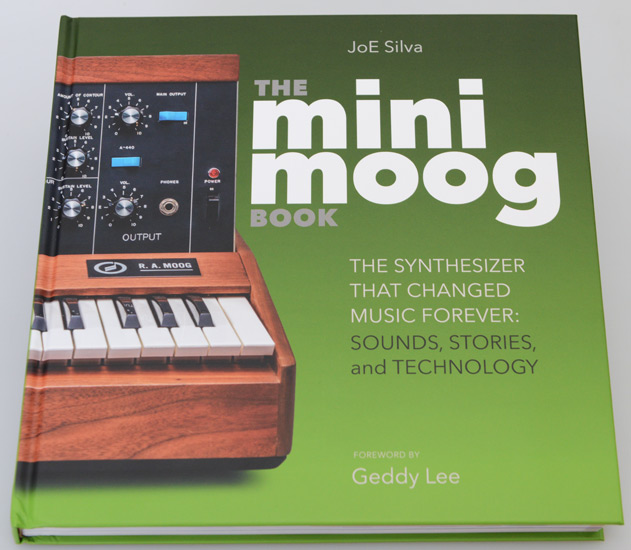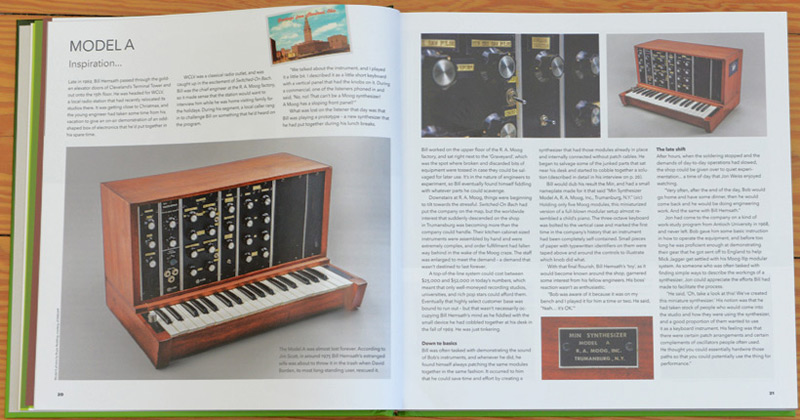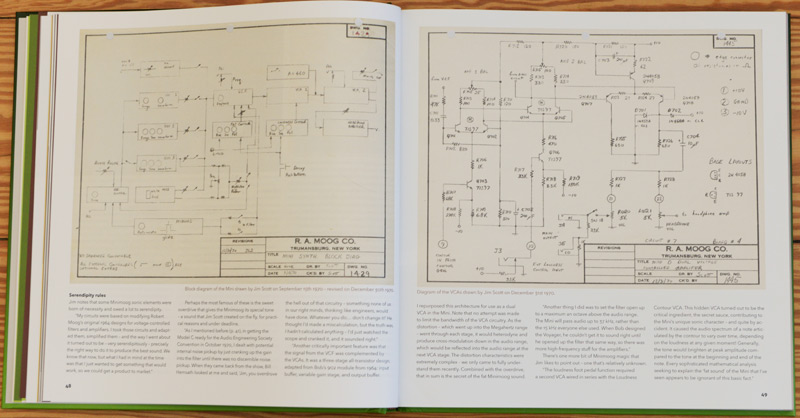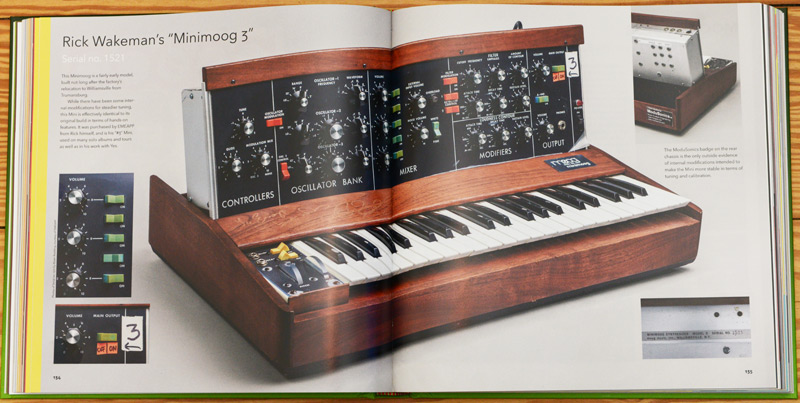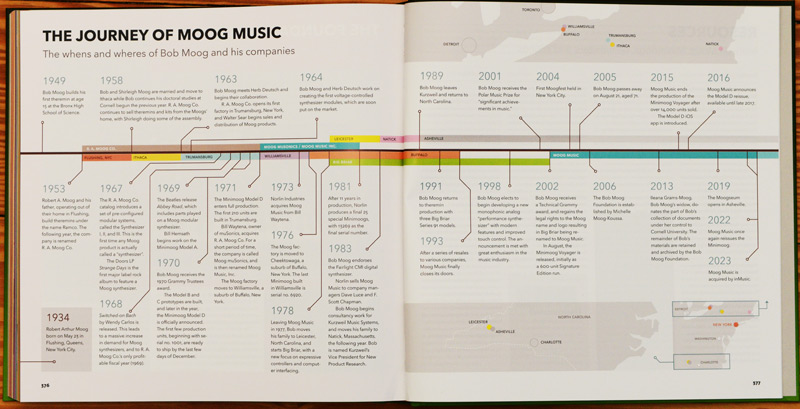The Mini Moog Book by Bjooks Publishing
History, technology, and artists
Book review by Peter Kaminski
Bjooks Publishing from Denmark has become known for its various book publications, such as Patch & Tweak, or Synth Gems 1. All previous publications are of very high quality in terms of content, layout, and design. Expectations are therefore high for the book “The Mini Moog Book” by author JoE Silva. Is there anything left that we don’t know about the Mini Moog? The simple answer is: Yes, and there are many things in fact. The scope of the work is astounding, namely, over 380 pages, very lovingly designed, and with many illustrations.
Right at the beginning, a lot is conveyed about the Mini Moog's predecessors. Even those familiar with synthesizer technology will learn a thing or two that is interesting.
There are also technical details to be read throughout the book, including circuit diagrams. I find this particularly remarkable because it is missing from other publications. However, this should not deter readers in any way because those who do not know much about circuit diagrams will find out about the technology used in the texts, which should be of interest to all users.
The various models of the Mini Moog and their peculiarities are also discussed – including the Minimoog Voyager, the iOS app, and the current Model D reissue.
One topic that we have not illustrated here for legal reasons is the many user stories - absolutely worth reading and entertaining contributions from the world of pop music history with over 100 interviews. Also, 37 patches from various artists are shown and discussed in the form of graphics that depict the settings (David Bowie, Yes, Gary Numan, Madinna, Phil Collins, Rush, Kraftwerk and many others).
Even today’s users of tablets and readers of online articles will be fascinated by this book: well presented and excellently researched. A book that addresses the full range of topics related to the Mini Moog, from history, technology, practice, artists, and their musical creativity with the Mini Moog.
The price is 75 euros, and the book is available on both the Bjooks Publishing website and from specialist retailers. The price is absolutely reasonable for the extensive content and physical quality of the book. An absolute recommendation, and not only for those who like to study historical synthesizers but also for those who use virtualization. I always think it’s very important to know more about an instrument. With this knowledge, it can be better understood and then used more effectively.
 How to resolve AdBlock issue?
How to resolve AdBlock issue? 